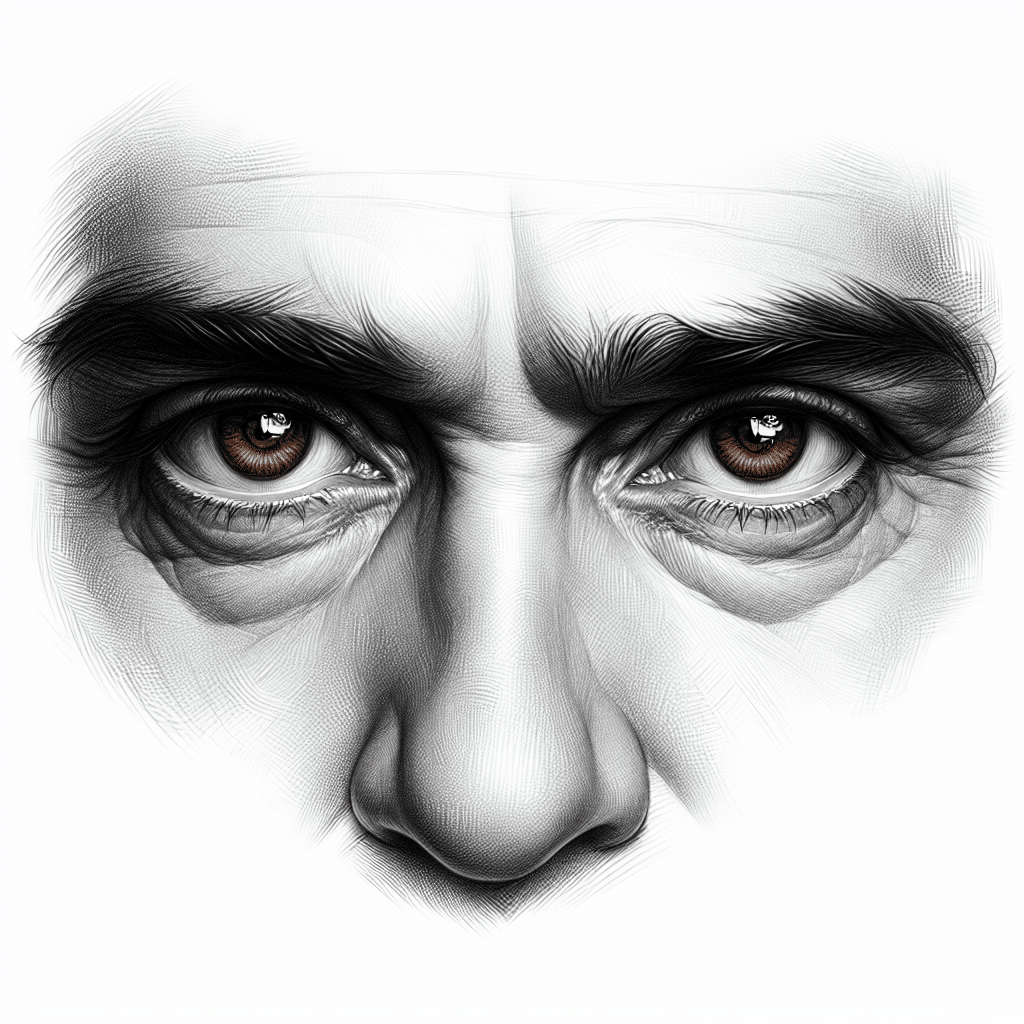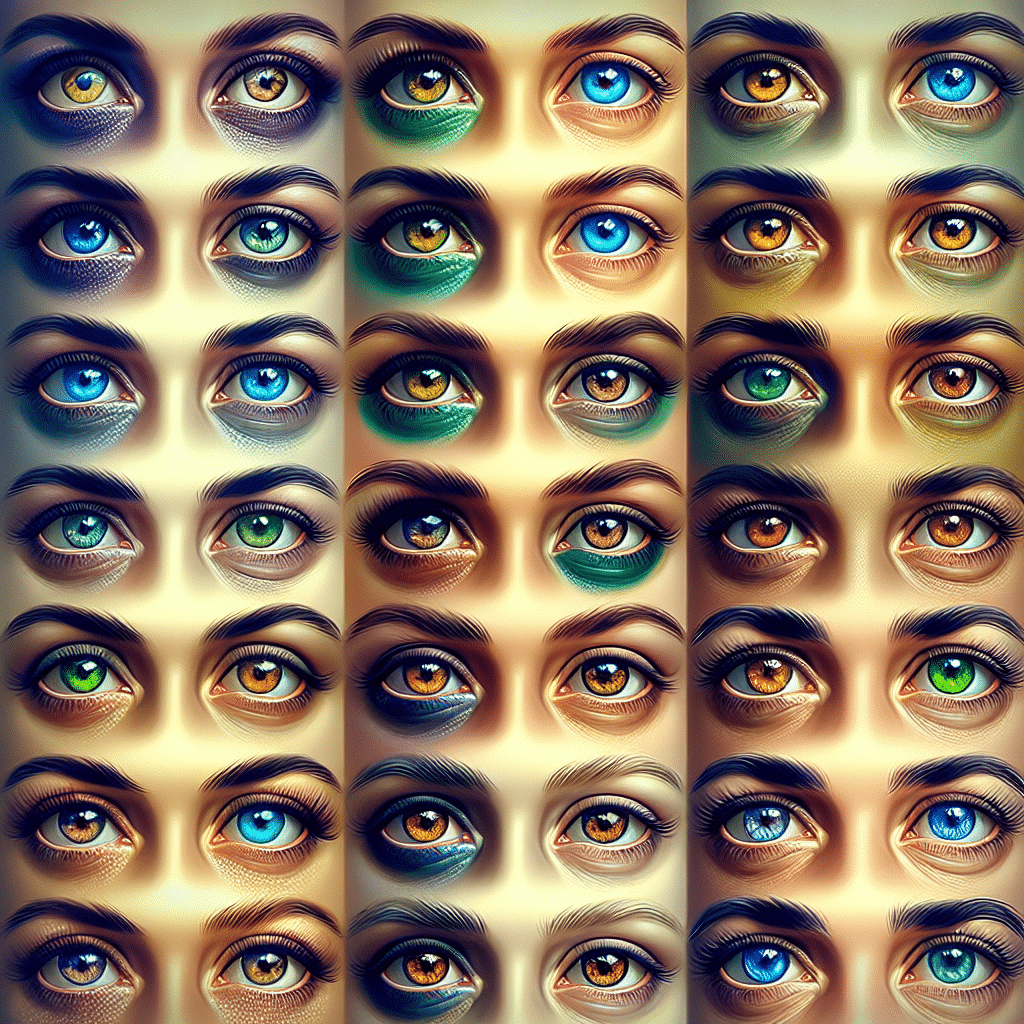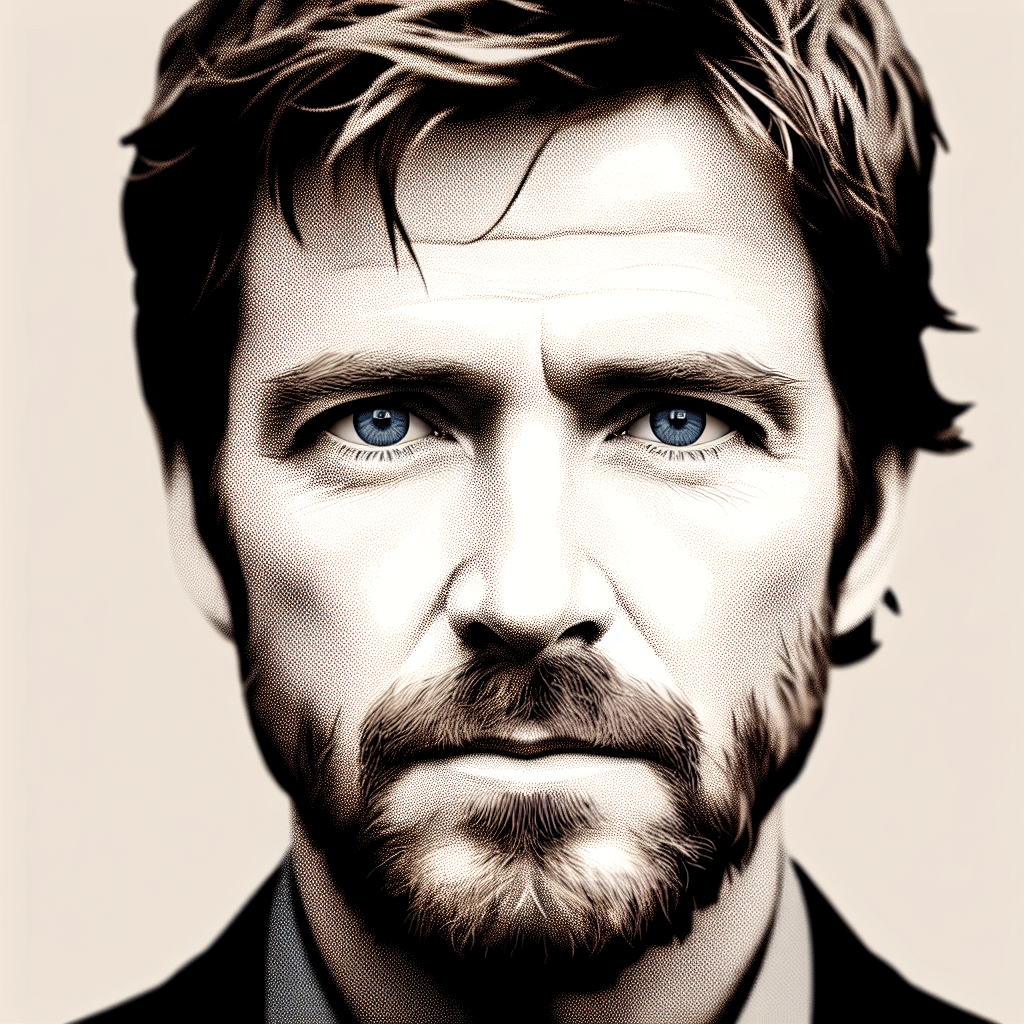Exploring Celebrity Eye Colors
Philip Seymour Hoffman’s Blue Eyes
Philip Seymour Hoffman had striking blue eyes that were part of his recognizable features. Alongside his pale-blue irises, he sported a shock of strawberry-blond hair and a chunky physique, which made him easily identifiable (Rolling Stone). His eye color added an intriguing depth to his performances, allowing him to convey a wide range of emotions on screen.
In the world of Hollywood, blue eyes can often be a ticket to stardom. To illustrate just how common blue eyes are among celebrities, here is a quick comparison of some actors with blue eyes:
| Actor | Eye Color |
|---|---|
| Philip Seymour Hoffman | Blue |
| Daniel Craig | Blue |
| Natalie Portman | Brown |
| Emma Watson | Brown |
| Liam Neeson | Blue |
While not every actor with blue eyes becomes a household name, Hoffman certainly made his mark with a versatility that made him adaptable to any role, proving that it’s not just about the color of one’s eyes but how they are used to tell a story (Go Into The Story).
Impact of Eye Color in Hollywood
Eye color can play a unique role in an actor’s casting and the characters they portray. In Hollywood, certain colors are often associated with specific traits. Blue eyes, often seen as more approachable or innocent, can lead to roles that emphasize vulnerability or depth. Conversely, darker eyes might be cast for more intense or brooding characters.
Meryl Streep once highlighted the importance of curiosity in acting, noting that actors like Hoffman are eager to embody their characters fully (Go Into The Story). This curiosity allows actors to transcend their physical features, including eye color, and dive deep into the essence of their roles.
While eye color might catch the audience’s attention initially, it’s the performance that leaves a lasting impression. For a list of other actors and their eye colors, check out our article on movie star eye color.
Philip Seymour Hoffman’s Unique Features
Philip Seymour Hoffman was a unique presence in Hollywood, not just for his talent, but for his unconventional looks and everyday charm. He embraced an appearance that many might describe as “stocky and sleepy-looking,” but that was all part of his allure.
Unconventional Physique
Hoffman’s physique was not what one might expect from a leading man. With his blond, generally uncombed hair, he often appeared more like the neighbor you borrowed sugar from than a Hollywood star. His stocky build and laid-back style made him relatable, and he wasn’t shy about showcasing this. He famously rode his bicycle to TV interviews, often arriving in a sweaty t-shirt and waving off makeup requests with a charming, self-deprecating humor.
| Feature | Description |
|---|---|
| Hair | Blond, often unkempt |
| Build | Stocky |
| Look | Sleepy, relatable charm |
His unconventional appearance worked to his advantage, allowing him to embody a wide spectrum of characters. This versatility made him a chameleon on screen, transforming himself for roles that ranged from comedic to dramatic. He could shift from a quirky sidekick to a tortured genius with remarkable ease (Go Into The Story).
Everyday Looks and Charm
Hoffman’s charm lay not only in his appearance but also in his authenticity. He embodied a relaxed, down-to-earth vibe that endeared him to audiences. His interviews often felt like conversations rather than performances, and he approached his craft with a sense of humor and humility. The man who could portray intense characters like Truman Capote was also the same one who would joke about his own appearance and habits.
His everyday look, coupled with his exceptional talent, created a magnetic presence. Hoffman’s ability to connect with audiences was rooted in this authenticity. His performances were not just about acting; they were explorations of the human experience, making him a captivating figure in the world of film.
For those curious about the eye colors of other stars, check out our articles on Riz Ahmed’s eye color or Natalie Portman’s eye color. Each actor brings a unique look to the screen, much like Hoffman did with his distinctive charm.
Remembering Philip Seymour Hoffman
Hoffman’s Last Days
Philip Seymour Hoffman’s final days were marked by a poignant struggle against demons that many never saw. He was found dead in his apartment bathroom, a syringe hanging from his arm after a heroin overdose. Despite two decades of sobriety, he battled addiction and had entered rehab twice in the two years leading up to his untimely death. This shocking end left many questioning how a man known for immense self-control could fall so tragically off the wagon.
Hoffman’s death resonated deeply within the arts community and among his family and friends. It highlighted the silent crisis of loneliness that can lurk beneath the surface of even the most successful lives. He once expressed that parts of him remained off-limits and that no one truly understood him, a sentiment that sheds light on the layers of complexity behind his performances.
Impact on the Arts World
The impact of Hoffman’s passing rippled throughout the arts world, raising discussions about mental health, addiction, and the pressures faced by those in the spotlight. He was often praised for his ability to portray characters filled with sadness, loneliness, and desperation—traits that mirrored his own internal battles. His profound ability to convey vulnerability earned him the title of “the greatest actor of his generation”.
Many tributes poured in after his death, celebrating not just his extraordinary talent but also the deep emotional truth he brought to his roles. His performances encouraged a greater understanding of the human experience, reminding audiences that beneath the surface, many carry burdens that remain unseen. For those interested in eye color, it’s worth noting that Hoffman’s unique and expressive blue eyes contributed to his on-screen magnetism, captivating viewers and making his characters all the more memorable.
His legacy continues to inspire both actors and audiences alike, prompting conversations about the importance of mental health awareness and the struggles that often accompany creative genius. If you’re curious about the eye color of other stars, consider exploring the eye color of Riz Ahmed or Michael Fassbender.
Understanding Loneliness and Vulnerability
Loneliness vs. Depression
Loneliness and depression often stroll hand-in-hand, but they are not the same. Loneliness is that pesky feeling of isolation, like being at a party where no one wants to dance with you. It’s defined as “the unpleasant experience that occurs when a person’s network of social relations is deficient in some important way” (The Paris Review). On the other hand, depression is more like being stuck in a dark room with all the lights turned off and no hope of finding the switch.
Loneliness can lead to depression, and vice versa. When one feels lonely, it can create a downward spiral of emotions that can be hard to escape. Interestingly, people often dismiss loneliness as mere “emotional neediness,” failing to recognize its deeper implications.
| Feeling | Definition |
|---|---|
| Loneliness | A feeling of isolation due to a deficiency in social relations. |
| Depression | A mood disorder characterized by persistent sadness and loss of interest. |
Hoffman’s Struggles and Portrayals
Philip Seymour Hoffman was no stranger to the complexities of loneliness. His untimely death brought to light the latent potency of this emotion, showcasing how it can sneak up on individuals, often remaining unnoticed until it overwhelms them. Throughout his career, Hoffman portrayed characters that were often sad, lonely, and desperate, mirroring his own struggles with vulnerability.
His extraordinary ability to convey crushing vulnerability earned him the title of “the greatest actor of his generation.” This talent allowed audiences to connect with his characters on a profound level, making their loneliness palpable and relatable. Hoffman’s performances were often a reflection of his internal battles, allowing viewers to see the raw emotions that many may try to hide.
Understanding the relationship between loneliness, depression, and Hoffman’s artistic expressions can provide a deeper appreciation for his work and the struggles he faced. For those interested in exploring the eye color of other stars, check out our articles on Riz Ahmed’s eye color and Natalie Portman’s eye color.
Hoffman’s Passion for Reading
Philip Seymour Hoffman was not just a talented actor; he was also a voracious reader, and his love for books could rival that of a coffee addict on a Monday morning. Hoffman’s reading habits were so intense that he compared his compulsion for books to smoking, stating that he read every day. He had an insatiable appetite for literature, making it a core part of his daily routine.
Compulsive Reading Habit
Hoffman’s reading routine was nothing short of extraordinary. He would often read multiple books at the same time, hopping from one to another like a kid in a candy store. This habit not only kept his mind sharp but also helped him build an impressive mental reference library. He even spent time strolling through bookstores, soaking up the literary atmosphere and discovering new reads.
| Reading Habit | Description |
|---|---|
| Daily Reading | Hoffman read every day, likening it to smoking. |
| Multiple Books | He often juggled several books simultaneously. |
| Bookstore Visits | He enjoyed exploring bookstores for new finds. |
Favorite Authors and Books
Hoffman’s literary tastes were as eclectic as his film roles. He admired writers such as Richard Yates, John Irving, Richard Ford, and Philip Roth, considering them to be literary giants. He often mythologized these authors, feeling a mix of admiration and vulnerability when discussing their works. Some of his favorite reads included:
- “In Cold Blood” by Truman Capote
- “Breakfast at Tiffany’s” by Truman Capote
- “The Human Stain” by Philip Roth
- “Sea Oak” by George Saunders
His passion for reading extended to short stories as well, as he appreciated Adam Haslett’s collection, “You Are Not a Stranger Here.” Hoffman found immense value in literature, often reflecting on how a powerful story could convey deep societal commentary, as he noted about Saunders’ work.
Hoffman’s love for reading played a significant role in shaping his artistic vision, enriching his performances with depth and insight. For fans interested in the eye color of other celebrities, consider checking out movie star eye color and explore the hues that define their on-screen personas.
Acting Lessons from Philip Seymour Hoffman
Versatility in Character Portrayal
Philip Seymour Hoffman was a master of versatility, able to slip into a myriad of roles without breaking a sweat. His physical form worked to his advantage, as he wasn’t pigeonholed into any particular character type, allowing him to embody a wide range of personas. This adaptability made him a highly sought-after actor, enabling him to become anyone from an eccentric writer to a gritty drug dealer. Meryl Streep once highlighted the importance of curiosity in acting, noting that actors like Hoffman were eager to devour life experiences and make them a part of themselves.
| Role Type | Examples |
|---|---|
| Dramatic | Capote, The Master |
| Comedic | Along Came Polly, The Big Lebowski |
| Intense | Doubt, Before the Devil Knows You’re Dead |
Immersive Acting Techniques
Hoffman didn’t just act; he immersed himself in his roles. For instance, when preparing for his portrayal of Truman Capote, he dedicated four and a half months to intense concentration and preparation. He approached acting like a detective, searching for the secrets that would unlock a character’s essence. This dedication meant he stayed in character all day, embracing the required emotional and psychological complexities of his roles.
Mike Nichols, a director who worked closely with Hoffman, praised his ability to transform into distinct and entirely different characters. Despite maintaining his physical appearance, Hoffman’s entire constitution seemed to change, allowing him to reconstitute himself from within to embody another human being. This method of acting is a valuable lesson for aspiring actors, highlighting the impact of thorough preparation and deep character exploration.
For those interested in the nuances of different celebrities, including their eye color, check out the eye color of your favorite stars, such as Riz Ahmed and Natalie Portman.



